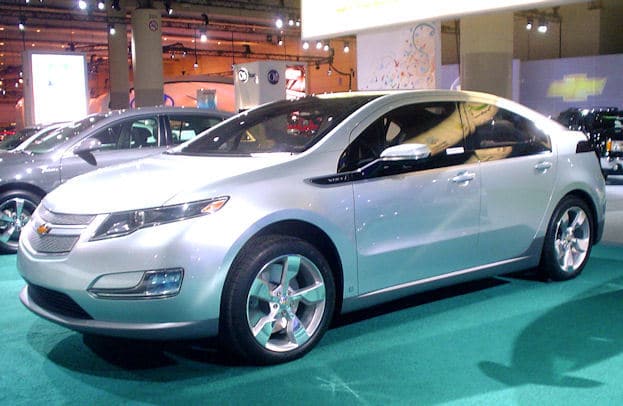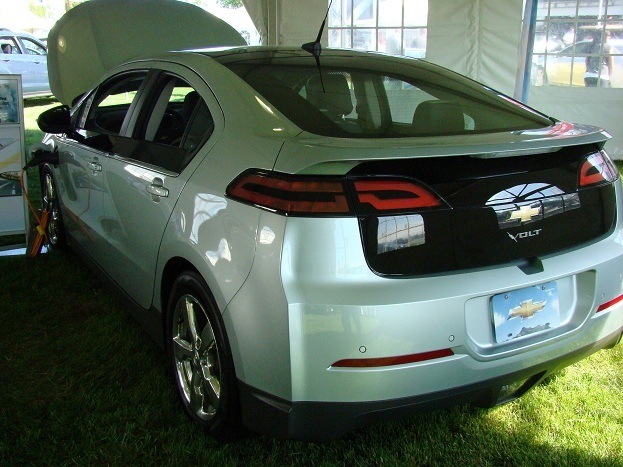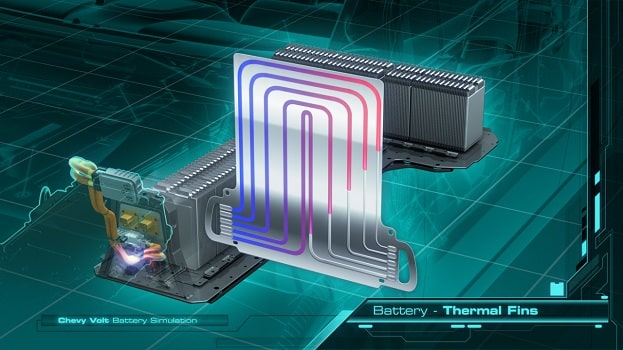We knew it was only be a matter of time when an automotive safety alarm bell would sound over an electric vehicle. One of the heaviest promoted vehicles unleashed on the North American marketplace in the past few years, the plug-in hybrid Chevrolet Volt represented a new way that automobile producers and customers could view roads in the near future. A high-profile vehicle, the brand-new Chevy Volt is now facing a publicly visible probe into a potentially dangerous defect that appeared during the United States National Highway Traffic Safety Administration’s New Car Assessment Program.
Following a standard side impact pole test in May of 2011 where a Chevrolet Volt was awarded a five-star rating (thanks in part to side curtain airbags), the major drama for the American-built plug-in hybrid car did not develop until three weeks after the crash. In June, a fire that engulfed the crashed car as well as three other vehicles was linked to the Volt‘s electrical propulsion system. Revealed in paperwork filed on the 25th of November, the resulting incident was traced to a failure of the Chevrolet Volt’s lithium-ion battery pack. Like most modern battery-powered vehicles sold or about to be sold in North America, the Volt’s electrical storage is temperature-controlled. Through the initial crash test, the NHTSA team discovered the coolant line damaged following the side impact, which is believed to be connected to excessive heat from an injured lithium-ion battery pack causing the vehicle fire.
Since the June fire, an investigation started by the NHTSA has included an attempt to replicate the condition that created the fire. In early November, three Chevrolet Volts were subjected to identical side impact pole crash test intent in recreating the potential cause of the fire five months earlier. Though those tests did not result in fires of the lithium-ion battery, the retest of the vital Chevrolet Volt component was recorded to have spark and smoke accompanied by an elevation in temperatures that reached up to 180 degrees Fahrenheit. While attempting to notify the public of their investigation on the Chevy Volt’s primary energy storage pack, the NHTSA cautions that there are no real-world incidents yet to result in a side impact causing the kind of battery damage occurring in the New Car Assessment Program test.
Reacting to this disturbing news made public, General Motors was prompt in reassuring that the auto company is working closely with the NHTSA in detailing this crash test concern. Senior vice president of global product development Mary Barra has commissioned an engineering team to track down and eliminate any further electrical problems. For owners of the plug-in hybrid Volt feeling uneasy about their Volts for the interim, Chevrolet has extended to them use of another General Motors vehicle for no charge (no pun intended). General Motors also asserts the favourable Chevy Volt crash test results that totalled a 5-Star rating as attributes of the vehicle.
With 5,003 examples of the Chevrolet Volts sold this year up to the end of October, the vehicle enters wide sales distribution across the United States and into Canada against a fair share of public praise as well as criticism. Admirable for its innovative production car powertrain that could be the key to the next generation of automobiles, some doubt the nearly $40,000 (offset partially by federal test credits) Chevy Volt is nothing more than an eco-friendly publicity machine. While some will forgive the plug-in hybrid Volt if a fix to the potential risk of battery overheating is fixed quickly, the hatred for the car by others could be compounded with the NHTSA investigation. Remaining in opposition for the Chevy Volt are some people who has acute techno-fright when it comes to electrified vehicles.
A first major challenge relating to a safety defect (and one can expect a last), the resolution for the Chevrolet Volt is important in determining future acceptance of electrified vehicles. Besides the returning exploration for the Chevrolet Volt sedan, General Motors future premium expression of the plug-in hybrid system in the Cadillac ELR wagers heavily on maintaining confidence in the reduced-emissions technology.
Information source: General Motors, National Highway Traffic Safety Administration
Photo source: Chris Nagy, General Motors




